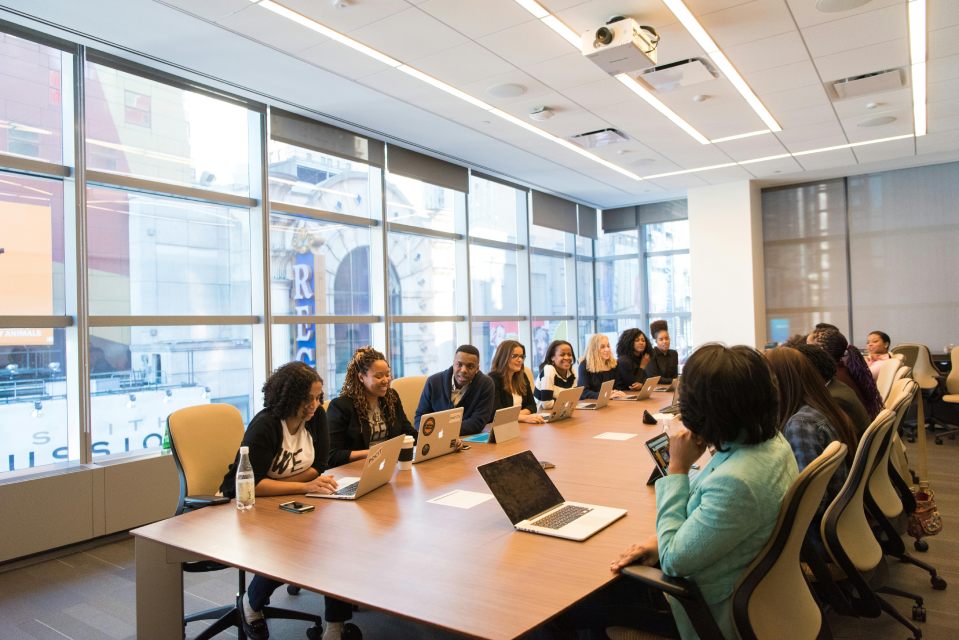You don’t need us to tell you how much work goes into organising in-person meetings as an Executive Assistant (EA) or meeting planner. Nikki Stimson from TROOP shares great tips on how to keep your meetings on track…
Organising and running a meeting that is thoughtful, purposeful, and efficient takes time and skill, especially one where attendees need to travel to be there in person. That’s why it can be especially frustrating – both for you and your attendees – if these meetings aren’t then spent effectively. If meetings frequently go off track or lack purpose, it can lead to meeting overload – or worse – burnout, resentment, and resignations.
The overall effectiveness of a meeting is equal parts organiser and attendees. The good news is you can work together to make meetings as effective as possible by following some simple tips from TROOP.
How to keep your meetings on track
1. Have a clear meeting objective
A great place to start when planning an effective meeting is with the overarching objective. We’d argue that understanding the goal(s) of the meeting is the most important step you can take in ensuring your entire event goes off without a hitch. And it’s worth asking all key stakeholders for input so that everyone is aligned. If the objective is in any way unclear, that’s an easy way to know that the meeting needs additional planning, communication, structure and – in some cases – an entire re-think.
At times, meetings can have multiple objectives. However, it’s usually more productive to have only one or two main objectives so that you can structure the other elements of the meeting around them. This could be the agenda, attendee list, or meeting venue. Planning around the meeting objective(s) will create the optimal environment to reach it.
Once the meeting objective is agreed upon among key stakeholders, it must then be communicated clearly with all other attendees ahead of time, so that they can come prepared, and know what the expected outcomes of the session are.
2. Make sure the right attendees are invited
Having the right attendees at the meeting is crucial. Especially when in a distributed workforce, many key meetings can happen in silos without the right stakeholders present. Before diving in and inviting the people you think you should, it’s wise to double-check with key stakeholders as to who should be in attendance, and why.
With all the right minds in the room, you have a much better chance of having a productive meeting that everyone thinks is worthwhile.
3. Create a detailed meeting agenda helps to keep your meeting on track
A good meeting agenda is more than just a list of tasks to get through, or topics to discuss. Your agenda needs to act as a roadmap for the meeting.
Understanding which sessions or topics are most important is the key to fulfilling the overall objective. Plan for those first. For each session, determine who is most suitable to lead it, the optimal format, and how much time should be allocated to it.
When configuring the agenda, consider factors such as breaks, running over, the time of day, the priority, and the type. Allow for some flexibility by leaving room in your schedule for unexpected but valuable interactions. Being too rigid about your agenda can cause you to miss out on the moments of inspiration that happen spontaneously.
4. Align travel and accommodation logistics with the agenda
Whether you are booking travel for attendees or they are booking on their own, it’s important to clearly communicate the agenda and give strict timelines around when attendees should arrive and depart. This approach ensures all attendees are prepared and ready to work when the session begins, maximising productivity during the meeting.
When giving arrival and departure timelines, make sure to leave adequate time for attendees to get to the meeting, spend quality time in session, and get rest afterwards if needed.
TROOP TIP: TROOP’s platform enables planners to input the start and end times of a meeting and suggests individual travel arrangements around those times automatically. This ensures everyone has adequate time to arrive at the meeting, whether on the day of or the night before.
5. Enable attendees to prepare beforehand
Having everyone prepare for a meeting in advance is a great way to hit the ground running when you enter the meeting room and use the time more effectively. To do this, ensure any content, such as agendas, relevant information, or other reading materials, is sent to attendees in advance, with clear instructions to read through them before the meeting.
That way, none of the finite time you have in the meeting room is spent going over information that could have been reviewed beforehand. You can get to work on making decisions, brainstorming ideas, or discussing important matters.
6. Track your time
To make sure your attendees are staying on track (and on topic) throughout your meeting, it can be useful to delegate a person to track the timings of your discussions to make sure you’re aligned with the agreed-upon agenda. This may mean the team will have to table certain discussions in order to get through everything.
Consider using an alarm or keeping the agenda visible so that all attendees can help stay on track. If you have time, you can always circle back at the end of the sessions for anything left open.
7. Delegate someone to take notes
Rather than everyone having half an eye on note-taking, it’s more effective to delegate a single person to take notes during a meeting—that way, everyone else can remain fully engaged in the discussion. There are also AI notetakers that can do this as well. It may be sensible for your notetaker to be someone not directly involved in decision-making, so that their opinions or expertise are not lost while they write notes down. Perhaps, you’re the best fit for this role, so be sure to volunteer when available.
Remember that effective meeting notes should cover elements such as core ideas, potential challenges, outcomes, and follow-up actions—preferably with owners and deadlines included.
Conclusion
As a meeting planner, you cannot force attendees to bring their A-game to every meeting they attend, but you can give them the tools to make every meeting more structured, enjoyable, and with a clear purpose. By helping to create meetings that do what they’re supposed to, you’re breaking the cycle of endless or pointless meetings, and helping drive important business decisions forward.










